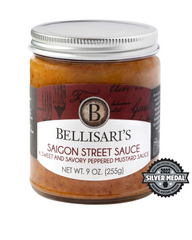
As much as pumpkin tends to take the spotlight this time of year, you can't overlook butternut squash. Just like pumpkin, butternut squash can be utilized for many dishes that you can whip up in the kitchen. Butternut squash, unlike its cousin, zucchini, has a tough, inedible exterior. But cooks who appreciate the squash’s rich flavor, impressive nutritional benefits, and kitchen versatility have learned that it’s well worth freeing this cold-weather favorite from its thick shell. It’s not as difficult as you might think. Did you know…. A cup of cubed butternut squash also provides 582 mg of potassium, more than the amount available in a banana. Although it is a winter squash, it is harvested in the fall but it keeps well for several months. As for storing, it’s best to keep it in a cool, dry place. Uncured butternut squash will last at least a month; if you cure the squash by exposing it to temperatures in excess of 80 degrees for 10 days straight, it can last as long as six months. It is a good source of fiber, potassium, and several other key nutrients. In terms of flavor, it’s similar to pumpkin, and can almost always be substituted for it in a recipe. Appearance-wise, the orange flesh of butternut squash most closely resembles sweet potatoes.
Although butternut squash is notably sweet, especially when cooked, it’s packed with nutrients, particularly vitamins A and C. Compared to sweet potatoes, butternut squash has less sugar, fewer calories, and fewer carbs, although sweet potatoes have a shade more protein and fiber. Butternut squash seeds are in the healthful eating category, containing plenty of protein and good fats. The nutritional content of squash makes it beneficial for digestion, blood pressure, and for healthy skin and hair, among others. Squash can enhance a range of sweet and savory dishes. To break down a squash for cooking, use a sharp knife to remove an inch or so at either end. At this point, you could microwave the squash for three or four minutes to soften the skin. Either way, you’ll then take a sharp knife to the squash. Stand the half squash on a cutting board and slice away the shell. Cut the squash at its neckline so the crook and body can be dealt with separately. Cut the body lengthwise and scrape out the seeds.






